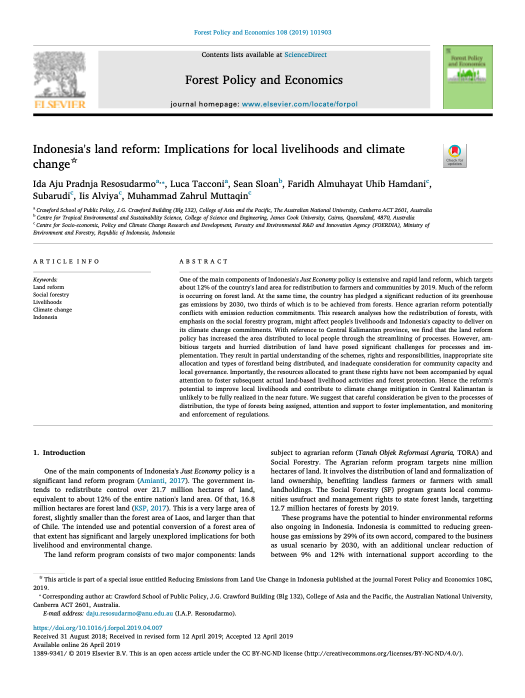Indonesia's land reform: Implications for local livelihoods and climate change
One of the main components of Indonesia's Just Economy policy is extensive and rapid land reform, which targets about 12% of the country's land area for redistribution to farmers and communities by 2019. Much of the reform is occurring on forest land. At the same time, the country has pledged a significant reduction of its greenhouse gas emissions by 2030, two thirds of which is to be achieved from forests. Hence agrarian reform potentially conflicts with emission reduction commitments.




